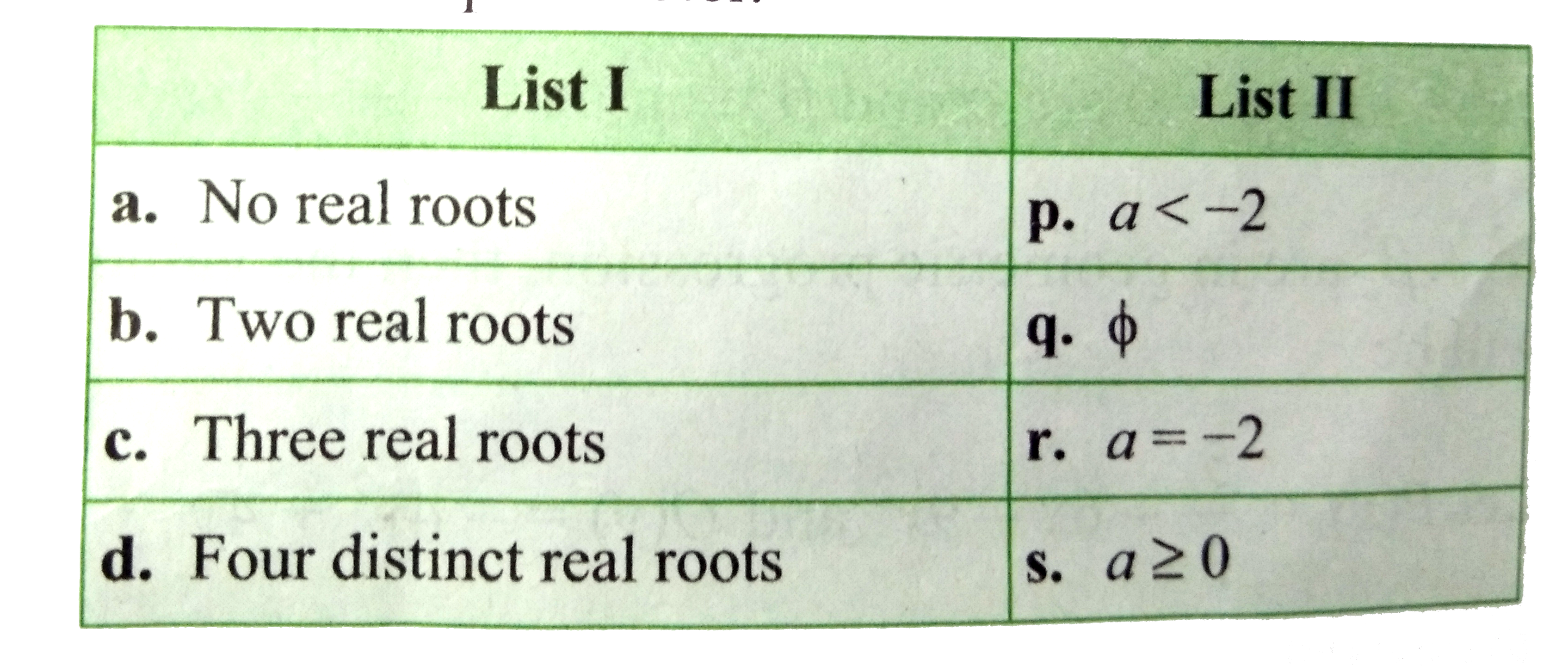Match the following for the equation where, a is a parameter.

The correct Answer is:
Obviously when , we have no roots a all the terms are followed by+ve sign. Also for a=-2, we have
or
Hence, the equation has two roots. Also when , for given equation
Hence, the equation has four roots as . Obviously, the equation has no three roots for any value of a.
Topper's Solved these Questions
- BOOK - CENGAGE ENGLISHCHAPTER - THEORY OF EQUATIONSEXERCISE - NUMERICAL VALUE TYPE43videos
THEORY OF EQUATIONS
- BOOK - CENGAGE ENGLISHCHAPTER - THEORY OF EQUATIONSEXERCISE - Archives JEE MAIN (single correct Answer Type )7videos
THEORY OF EQUATIONS
- BOOK - CENGAGE ENGLISHCHAPTER - THEORY OF EQUATIONSEXERCISE - Linked Comprechension Type37videos
THEORY OF EQUATIONS
- BOOK - CENGAGE ENGLISHCHAPTER - STRAIGHT LINESEXERCISE - ARCHIVES (NUMERICAL VALUE TYPE)1videos
STRAIGHT LINES
- BOOK - CENGAGE ENGLISHCHAPTER - THREE DIMENSIONAL GEOMETRYEXERCISE - All Questions294videos
THREE DIMENSIONAL GEOMETRY
Similar Questions
Match the following for the equation x2+a∣x1=0,wherea is a parameter. Column I, Column II No real roots, p. a<−2 Two real roots, q. φ Three real roots, r. a=−2 Four distinct real roots, s. a≥0
View SolutionThe equation x2+|x|+1=0
View SolutionDifferential equation of x2=4b(y+b), where b is a parameter, is
View SolutionSolve the following equations
x2−3−{x}=0
where [x] denotes the greatest integer and {x} fractional part.View SolutionA curve is represented paramtrically by the equations x=etcost and y=etsint where t is a parameter. Then
The value of d2ydx2 at the point where t=0 isView SolutionA curve is represented parametrically by the equations x=e1costandy=e1sint, where t is a parameter. Then, If F(t)=∫(x+y)dt, then the value of F(π2)−F(0) is
View SolutionThe orthogonal trajectories of the circle x2+y2−ay=0, (where a is a parameter), is
View SolutionLet x1,x2 are the roots of the quadratic equation x2+ax+b=0, where a,b, are complex numbers and y1,y2 are the roots of the quadratic equation y2+|a|yy+|b|=0. If |x1|=|x2|=1, then prove that |y1|=|y2|=1
View SolutionShow that x=0 is the only solution satisfying the equation 1+sin2ax=cosx, where a is irrational.
View SolutionSolve the following equation. x4−10x3+26x2−10x+1=0
View Solution

